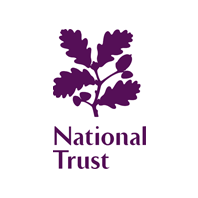Our March newsletter shows how local and county volunteer surveys contribute to Butterfly Conservation  ’s annual report.
’s annual report.
There’s no escaping the bleak conclusion of The State of the UK’s Butterflies 2015, bringing news of the serious decline of UK butterflies: a decline in the occurrence of 70{c8c3b3d140ed11cb7662417ff7b2dc686ffa9c2daf0848ac14f76e68f36d0c20} of species since 1976. A worrying fact is that some common, widespread butterflies like the Wall Brown and the Gatekeeper, are amongst those in the most rapid decline. Our butterfly survey volunteers on Nare Head and Treluggan Cliffs are familiar with these butterflies and sadly their records support the findings for the decline in the Wall Brown: it’s a butterfly that loves hot, sun-baked places. Recent evidence suggests that climate change may be one factor driving the Wall’s decline.
Happily, the Gatekeeper bucked the trend, for it gave hundreds of sightings, with increasing numbers year on year. Also known as the Hedge Brown, it loves hedgerows broken by sunny gateways, with bramble flowers for nectar and long grasses where eggs are dropped. Such good news is testament to the National Trust’s habitat management at both sites. Rangers cut the thorny shrubs annually and roll and cut the bracken to enable flower-rich coastal grasslands to become re-established.
Cornwall’s 25 butterfly monitoring sites are all managed by conservation organisations. A comparative study of records since 2010 for six Cornwall sites gave encouraging news that the butterfly species recorded are showing no signs of decline. The Speckled Wood and Ringlet occur in good numbers, as they do on Treluggan and Nare Head. Last summer ecologists published their findings from a study of some drought-sensitive species including Speckled Wood and Ringlet; they suggested their populations would suffer large losses before 2050 due to climate change and habitat fragmentation. On 7th February, Storm Imogen’s extreme weather is raging as I write, and droughts are hard to imagine!
For a cool, wet, windy summer, records for the Small Copper butterfly on Treluggan cliffs last year were second only to those on St. Martin’s! The species is one which (according to the report) has made a comeback in the past decade. Another encouraging conclusion is that the threatened Silver Studded Blue is showing signs of recovery in response to conservation measures in recent years. Last year’s count of 3080 on the dunes at Upton Towan, supports this finding. Rangers see them on Nare Head off piste – but we can’t ask volunteers to risk their lives!
Talking of volunteers, the UK report was informed by data gathered by two long-running citizen science projects involving tens of thousands of volunteers who monitor butterfly populations in 2000 locations. Did you know that evidence shows that being a butterfly survey volunteer improves your well-being?! We have a great group of butterfly volunteers and this year a new rota system aims for records for each week of the season. In particular we need volunteers for Nare Head. If you are interested please contact me christownsend624@googlemail.com

